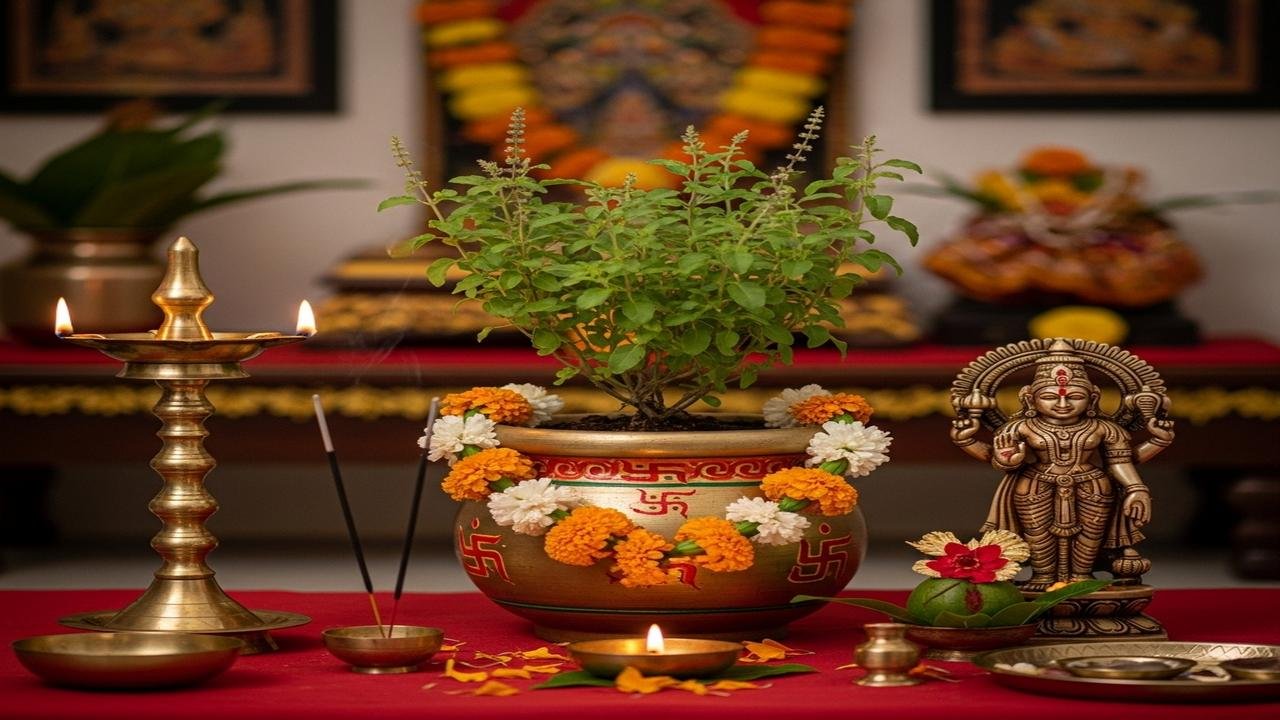Why Tulsi Is Worshipped in Every Hindu Household

Every morning in my grandmother’s small courtyard, a soft ritual marked the start of the day. She would wake before dawn, sweep the floor, sprinkle water, and stand before the little raised pot where a green, aromatic plant grew—Tulsi. She would touch its leaves, fold her hands, and whisper a short prayer. That simple moment carried centuries of belief, care, and a quiet sense of home. But why is Tulsi worshipped in every Hindu household?
The answer lives in stories, science, and the heart of daily life. In myth, Tulsi is not just a plant but a living goddess. One popular tale speaks of Vrinda, a devoted woman whose purity and loyalty made her sacred. When tragedy struck, she transformed into the Tulsi plant and was honored by the gods. Tulsi also became closely linked with Lord Vishnu and his avatars; worshipping Tulsi is seen as offering devotion to the divine. This is why we celebrate Tulsi Vivah, a charming ritual marriage of the plant to Lord Krishna or Vishnu every autumn—an act that brings homes alive with songs, flowers, and community joy.
Tulsi holds deep symbolism. Its leaves are a sign of purity and protection. In many homes, the Tulsi plant is placed at the center of the courtyard, symbolizing the heart of the household. The plant bridges earth and sky: roots in the soil, a stem that reaches up, and fragrant leaves that touch the air—reminding families of steady faith and daily connection to the divine.
There are practical reasons, too. For centuries, Tulsi has been part of Ayurveda and folk medicine. Its leaves contain compounds that help the body resist infections, reduce stress, and clear the air. Before modern air purifiers, a row of Tulsi plants in a home acted as a living filter and a natural medicine cabinet. Today, when people brew Tulsi tea for a sore throat or inhale its scent to calm the mind, they practice a tradition that brings spiritual comfort and real wellness.
The way families care for Tulsi shows how ritual shapes life. A typical morning might include:
- Waking the plant with light water and a gentle touch.
- Lighting a tiny lamp and offering a flower or a leaf during a short prayer.
- Keeping the plant clean, guarding it from feet and disrespect, and teaching children to show reverence.
These small acts teach values: respect for life, discipline, and gratitude. Women, elders, and children all take part, and the plant becomes a living teacher of patience and continuity. Even in cities, people place Tulsi pots on balconies and windowsills—adapting an ancient practice to modern life while keeping a sense of sacred space.
Tulsi also weaves families into a larger cultural fabric. Temples with Tulsi groves, local festivals, and shared rituals remind us that our homes belong to a wider spiritual community. The plant’s presence invites neighbors to visit, children to learn, and visitors to feel welcomed by the fragrance of devotion.
Ultimately, Tulsi is worshipped because it embodies love in simple form: a protector that cleans the air, a healer that soothes the body, and a symbol that lifts the spirit. The plant asks for little—water, light, and respect—and returns a sense of peace that fills the home.
Conclusion: Tulsi is more than a sacred herb; it is a living story passed down through generations. Caring for Tulsi connects us to nature, to health, and to devotion. Pause for a moment today—touch a leaf, breathe in, and remember that small rituals can hold the deepest grace.
